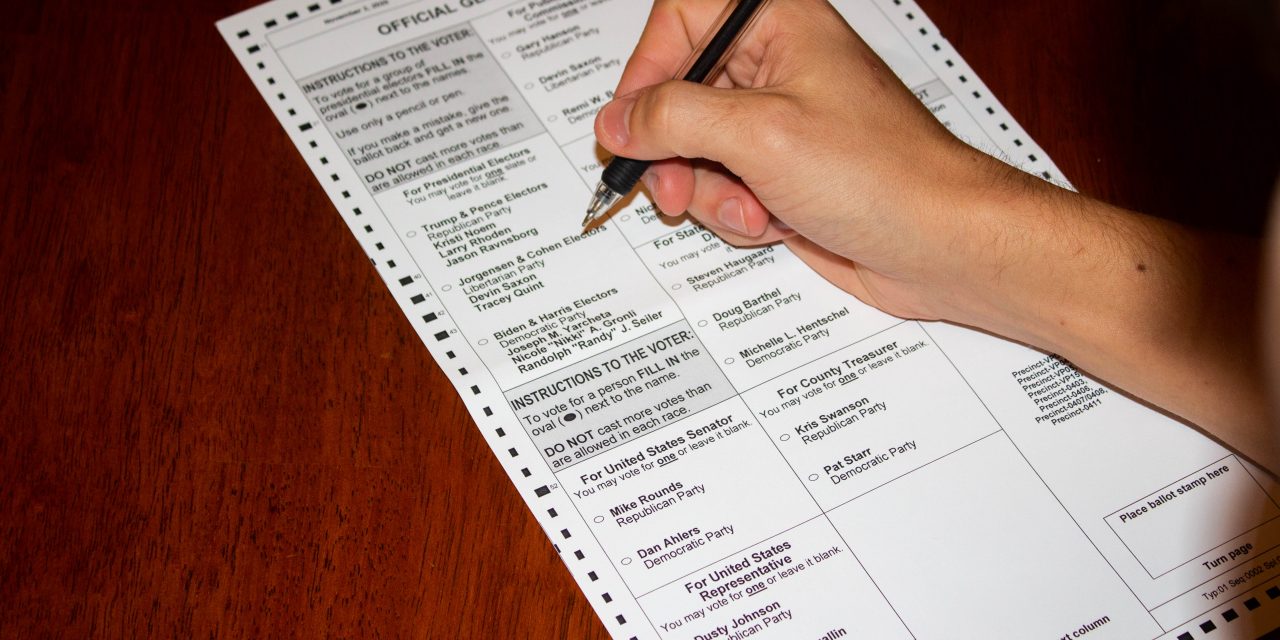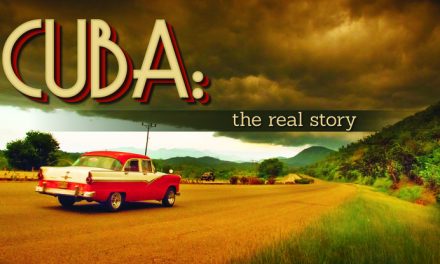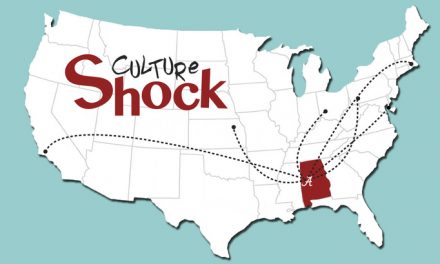STORY BY: Jaeden Joyner
Fraud, lies, corruption, mail-in voting: these words have been hot topics surrounding the 2020 election. This has resulted in the integrity of the U.S. voting system being one of the biggest of the issues argued back and forth across party lines.
Voting by mail is a practice that has been used by American citizens since the Civil War. It has historically been a convenient option for those who cannot take off work on election day, have no transportation to the polling place, those working overseas, members of the U.S. military, and out-of-state college students. This option increases overall voter turnout by supplying options for people who would otherwise not be able to vote. Especially as COVID-19 continues, mail-in voting is the option of choice for those who are at home sick or are members of at-risk populations afraid of exposure at the polling locations.
On July 30th, in response to the idea of an election held mostly via voting by mail, President Trump tweeted, “With Universal Mail-In Voting (not Absentee Voting, which is good), 2020 will be the most INACCURATE & FRAUDULENT Election in history. It will be a great embarrassment to the USA. Delay the Election until people can properly, securely and safely vote???” Since then, reports of fraud have come out across the country. For example, New Jersey held an election this year on May 12 entirely over mail due to the threats of coronavirus. According to some, this election was considered a “debacle”, and clear evidence of the problems with mail-in voting. Meanwhile others have come out with accusations that the President is spreading misinformation and fear in an effort to secure his position in the White House.
“No one has done more to sow suspicion or spread lies than President Donald Trump, whose aggressive attacks on mail-in voting and false allegations of widespread voter fraud have capitalized on fear and uncertainty about holding a presidential election in the midst of the COVID-19 pandemic,” a Time Magazine article said.
Questioning the integrity of mail-in voting has caused many Americans to distrust the voting system and, by extension, democracy. When Americans are discouraged from voting in any way shape or form, that is called voter suppression. Voter suppression and voter discrimination are still happening today, in many different forms. Voter disenfranchisement still affects millions of Americans, and many around the nation are still fighting for their voice to be heard.
The Voting Rights Act of 1965 was a monumental step into the future for the United States of America. It banned discriminatory practices that were meant to keep people, especially African Americans, from exercising their right to vote. Despite the 15th amendment officially prohibiting the government to deny anyone a vote on the basis of race, loopholes were found to get around it. Bureaucratic barriers like literacy tests and poll taxes, as well as aggression and abuse from regular citizens were used to keep people away from the polls.
In 2013, the Supreme Court made a decision in the case of Shelby County v. Holder that repealed parts of the Voting Rights Act, specifically the part that determined that the nine states who had the highest rates of voter discrimination in the past had to get approved by the federal government before they could enact any changes to voting law, a practice called “preclearance.” The 2013 decision determined that the preclearance law was unconstitutional and as a result, these states were given the right to change voting laws as they pleased. This has cleared the path for politicians on both sides of the political spectrum to make changes in their states that restrict voting rights for the people they represent. Literacy tests may be a thing of the past, but there are many other ways that the government can, and has, suppressed the vote.
“Since 2013, states that previously had to clear their changes with the Justice Department have had greater reign to enact new laws that have made it harder many to cast a ballot, including restricting early voting, reducing polling places, and enacting restrictions like voter ID laws that can have a disparate impact on racial and ethnic minorities,” an article from Business Insider said.
The most common form of voter suppression in America today is voter ID laws. The theory behind these laws is to restrict the ability of citizens to impersonate others when they go to the polls. However, according to the Brennan Center for Justice, a non-partisan institute that focuses on democracy and justice, people are struck by lightning more often than someone tries to impersonate another at the polls. For example, the Brennan Center referenced a study where in Missouri in 2000 and 2002, hundreds of voters were alleged to have voted twice, either within the state or once in Kansas and once in Missouri. After combing through the data of all reported “fraud”, the rate of intentional fraud was revealed as 0.0003% of the votes. It also noted that not everything that data counts as “fraud” is intentional fraud. Clerical errors and other errors that are independent of the intent of the individual voter can cause a vote to be found “fraudulent.”
Multiple studies have found that Americans of color are less likely than white Americans to hold the correct form of voter ID, so they are disproportionately affected by voter ID laws. A study of the electorate of the state of Indiana in 2008 showed that after the enforcement of strict voter ID laws, they found, “strong and statistical differences with respect to access to valid photo identification that significantly reduces the opportunity to vote for minority, low-income, less-educated, and the youngest and oldest residents of Indiana.” If that Indiana law was applied strictly to the letter of the law, about 14% of likely white voters could be turned away from the polls and over 20% of likely black voters could be turned away.
Moreover, the process of acquiring the needed ID can be a deterrent from even trying to vote. The distance required to travel to the nearest place where one can acquire an ID, as well as the time and cost associated with getting supporting documentation for a “free” ID are all possible obstacles, especially when you consider that many ID-issuing offices are only open at very specific times during the month.
Another common form of voter suppression is voter roll purging, a process that normally involves removing from voter rolls the names of the recently deceased or individuals who have moved to a different state. The problem here is that through this process some eligible voters are also removed. Those eligible voters are unaware that they are no longer registered to vote until they show up at their polling place on election day, ready to cast a ballot. If they do not live in a state that allows day-of registration then they are unable to cast their ballot. After the Supreme Court decision in 2013, rates of voter roll purging increased drastically.
A major finding from the Brennan Center found that many of the states who used to be covered under the preclearance law began to drastically increase their rates of voter roll purging after preclearance was repealed. They found that across the country between 2014-2016, 17 million names were purged from the voter rolls. This is opposed to 4 million names that were purged between 2006-2008. In the span of approximately eight years, over four times the amount of people were removed from voter rolls following the 2013 decision.
A third common tactic of voter suppression is the excessive closing of polling locations. In early 2020, counties in Texas were under scrutiny because they closed 750 polling locations since 2012, a majority of those being closed after the 2013 Supreme Court decision. Closing polling locations means farther distances required to travel by some, and longer lines for everyone once there, which can be a deterrent from even trying to go vote.
“The farther you move a polling place the less likely people are to go vote, especially among low-income voters — which in Texas is more likely to be Latino Voters,” according to Texas Public Radio.
Minorities are statistically disproportionately affected by voter ID law, roll purging and poll closing, but they are not the only ones affected. Americans can be barred from voting if they are currently in federal prison, serving probation or parole, or sometimes even after completing a sentence due to felony disenfranchisement laws. According to an article from the Sentencing Project, in 2016 approximately 6 million voters (about 2.5% of the population) were deprived of the opportunity due to felony disenfranchisement laws. This rate of disenfranchisement in eligible African Americans was about 1 in 13, which is four times greater than the rate in non-African Americans.
The same laws do not apply to those in local jails. They are eligible to vote, but many still do not. Another article from the Sentencing Project said that jail administrators often do not have proper knowledge about voting laws, and acquiring voter registration forms or an absentee ballot while incarcerated is challenging. In addition, many people in jail don’t know they still have the right to vote while incarcerated, and there are few programs to guarantee voting access.
For Americans with disabilities, factors such as lack of training for poll workers, inaccessible polling places, transportation issues, lack of resources and voter ID laws create problems that lead to them not being able to cast their vote. Many people with disabilities rely on special voting machines that are equipped with earphones and other modifications because they cannot fill out a paper ballot by themselves. But poll workers can be less comfortable with operating machine-based systems.
“Under increasing pressure to oversee a smooth, secure election, untrained poll workers have discouraged the use of accessible voting machines, leaving voters with disabilities behind,” said the Pew Research Center, a non-partisan “fact tank” based in Washington D.C. They also claim that Americans with disabilities are less likely to hold the proper forms of ID required to pass voter ID laws, mostly due to the fact that many are unable to drive. It claims that in West Virginia in 2016, only 46% of americans citizens with disabilities who were eligible to vote actually did.
For those who want to help fix the problem of voter suppression and disenfranchisement in America, many organizations exist that try to fight the problem. One such organization on campus is The League of Women Voters. Their mission is to increase civic engagement among voters and advocate for marginalized groups. It is led by co-presidents Trinity Hunter, a honors sophomore studying political science and public relations, and Anna Woodson, a sophomore studying kinesiology and psychology.
“We help people understand that their advocacy and voice does not stop at the ballot box in November. We stand up for the disenfranchised and the marginalized, and we stand firmly against voter suppression,” said Hunter.
“Voter suppression detracts from the voices of communities to speak for themselves and who they wish to represent them. With the way our governmental system is structured, voting is one of the most prevalent ways to voice your opinion and concerns. By taking this away, you are oppressing a sizable portion of the population, especially if their ability to be civically engaged beyond voting is also hindered… We must stand against voter suppression with the intention of maintaining as pure of a democracy as possible for the people of the United States,” said Hunter.
Hunter and Woodson outlined many ways that regular citizens can do their part to combat voter suppression. According to them, some ways to advocate for groups affected by voter suppression is to write letters to local policymakers, do research on voter suppression and how it may exist in your community, and help the people you know personally by finding ways to get them to the polls or to get registered to vote. But the most important and simple way that someone can combat voter suppression is to vote.
Possibly the most consequential idea that can be used to disenfranchise Americans in an election cycle, is the idea that their vote doesn’t matter. Every American can be tricked into thinking that their vote doesn’t matter, and that their vote can’t change the outcome of the election. This idea keeps thousands of Americans from even attempting to vote. Even though the simple truth is that every vote matters.
“If your vote did not matter, then there would not be people trying to suppress it,” said Hunter. “You have the ability to change the country you live in with just one small vote. Recognize your power and use it!”




